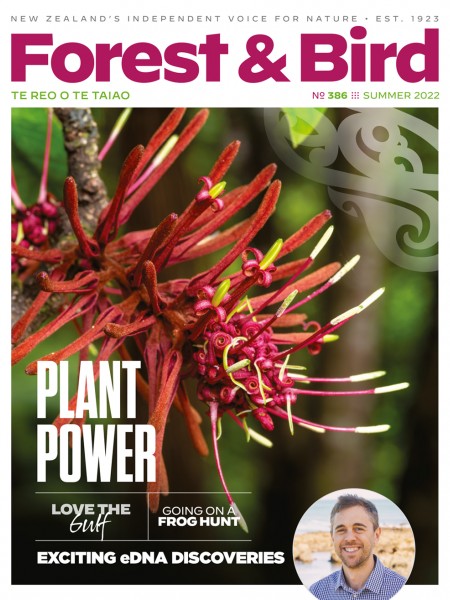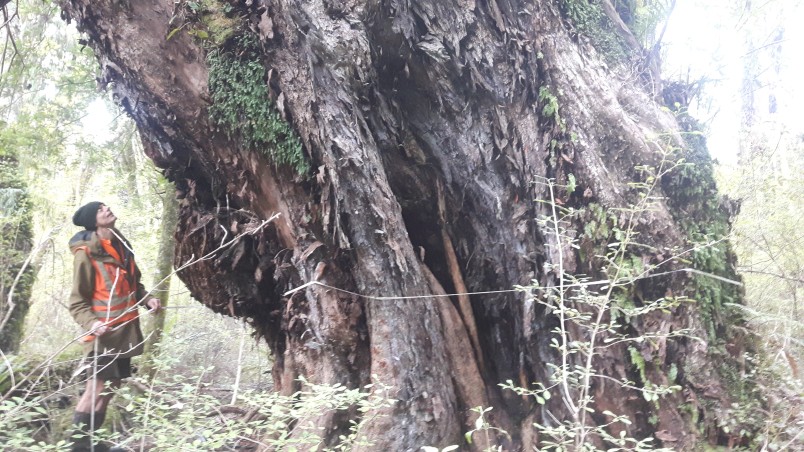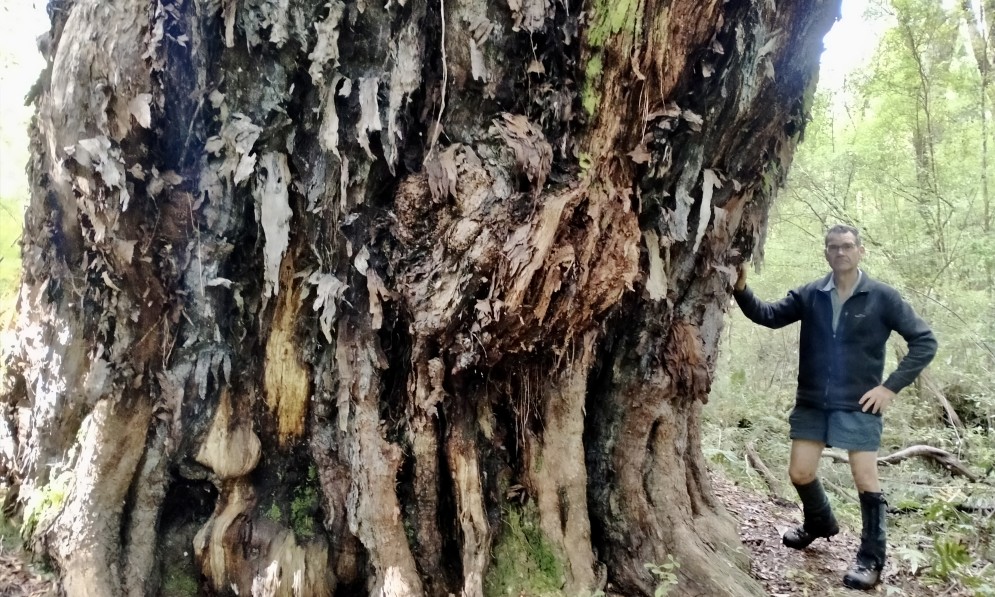A mammoth tree was recently found in Forest & Bird's Tautuku Ecological Restoration Project area. Could this southern rātā be a record-breaker?
"You can’t protect something if you don’t know it’s there,” is one of conservation’s truisms. It’s also the case that scientists are regularly discovering new species of flora and fauna in Aotearoa. In some remote areas, it’s a question of “seek and ye may find”.
Forest & Bird magazine
A version of this story was first published in the Summer 2022 issue of Forest & Bird magazine.

Down in the Catlins, Forest & Bird’s Tautuku Ecological Restoration team has been taking a closer look at some of the botanical delights located in their huge 6600ha project area that runs from the forested hilltops near Papatowai to the Southern Ocean.
And, goodness, have they come up with some wonderful floral finds recently, including a tiny Nationally Critical creeping foxglove.
Let’s start with the discovery of a giant southern rātā, thought to be 700 years old. With a trunk diameter of just over four metres, our experts believe this could be the largest southern rātā in in the South Island and therefore the world!
This possibly record-breaking Tautuku tree came to the project team’s attention in 2020 at the height of the Covid pandemic.
During a winter gecko survey in the Tautuku River valley, Forest & Bird’s pest control officer Gavin White and herpetologist Carey Knox stumbled across an extremely large southern rātā (Metrosideros umbellate).
It is located on conservation land in a remote part of the project area, far from any formed tracks. The forest in the immediate area contains a large number of huge rātā trees; however, this one was significantly bigger.
Photos and a description were sent to botanist and Forest & Bird Southland Branch stalwart Brian Rance, who works for the Department of Conservation at Murihiku. He expressed interest in viewing the huge tree and confirmed it was worth measuring.

Gavin White admires the massive Tautuku southern rātā. Image Francesca Cunninghame
Gavin and Forest & Bird’s Tautuku project manager Francesca Cunninghame returned to the site, on a wet and cold low ridge, with a suitably long measuring tape.
“The whole ridgeline is full of large rātā of all angles, shapes, and sizes. They are part of the landscape,” said Francesca. “But this tree appears through the undergrowth and makes people stop in their tracks and take a second look.
TURNING THE TRAMWAY
There is another special rātā in Forest & Bird’s project area, on Department of Conservation land about 170m outside the Lenz Reserve boundary. It has creamy white flowers and is known locally as the “white rātā”. It survived being chopped down in 1935, when a tramline was being built deep into the forest to allow woodcutters access. The men build-ing the tramway noticed the white rātā and decided to build the tram tracks around it so it wouldn’t have to be cut down. You can still see the lean in the old sleepers at that exact spot today.
“We arrived at the site and saw this wizened gnarled old tree at an angle, and there was no question about it – it was much larger than all the other huge rātā we had passed.
”Their initial measurements suggested it was comparable to two recognised giant northern rātā (M. robusta) – Rātānui, in Forest & Bird’s Tarapuruhi Bushy Park Sanctuary, near Whanganui, and the Karapoti rātā in the Tararua Ranges, north of Wellington.
Francesca called in the experts to help figure out just how big the tree is and whether it could be a record-breaker.
Earlier this year, botanists Brian Rance and John Barkla, together with Gavin White, carried out two plant surveys of the mid-Tautuku catchment, including a close inspection of the giant rātā.
The pair measured its diameter at breast height (dbh) of 4.036m and estimated it to be more than 30m tall, with the top of the tree emergent above the kāmahi canopy.
Rātā are recorded to live up to 500 years. However, this massive tree is almost certainly older. In fact, Brian thinks it may more than 700 years old!
“This tree is larger than any southern rātā in the New Zealand Tree Register. Is it the largest southern rātā in the Catlins, Southland, or possibly New Zealand?” John and Brian concluded in a summary of their survey report.
The giant rātā had 22 different plants growing on it, including nine shrubs and trees – kāmahi, rimu, miro, broadleaf, three finger, haumakoroa, matipo, stinkwood and Coprosma colensoi, 11 different ferns, bush flax (Astelia fragrans), and Easter orchid.
What now for Tautuku’s giant rātā?
We’ve thrown down the gauntlet and asked the question: Could this be the largest southern rātā on the planet? Write to us if you know of any bigger – email editor@forestandbird.org.nz.

